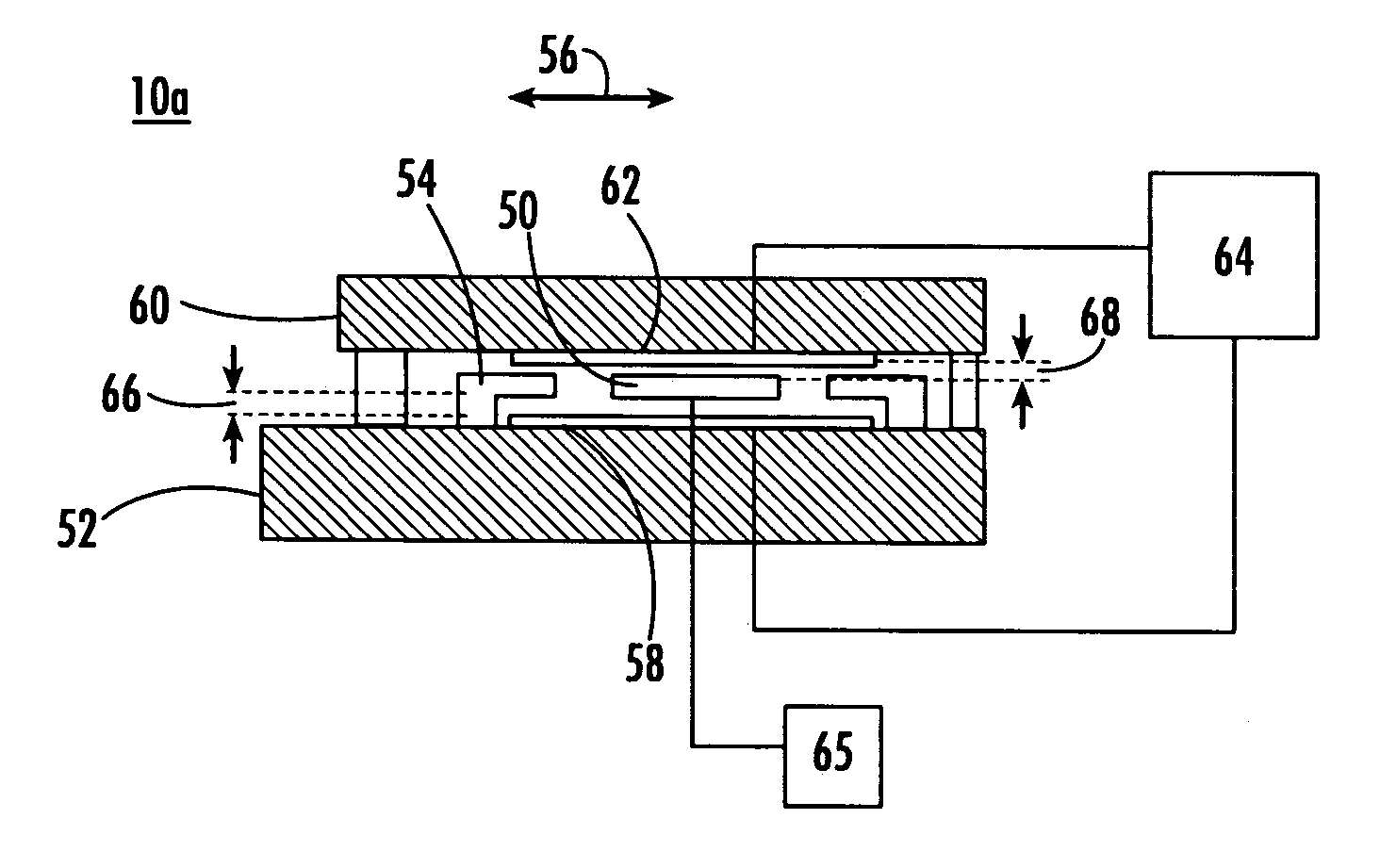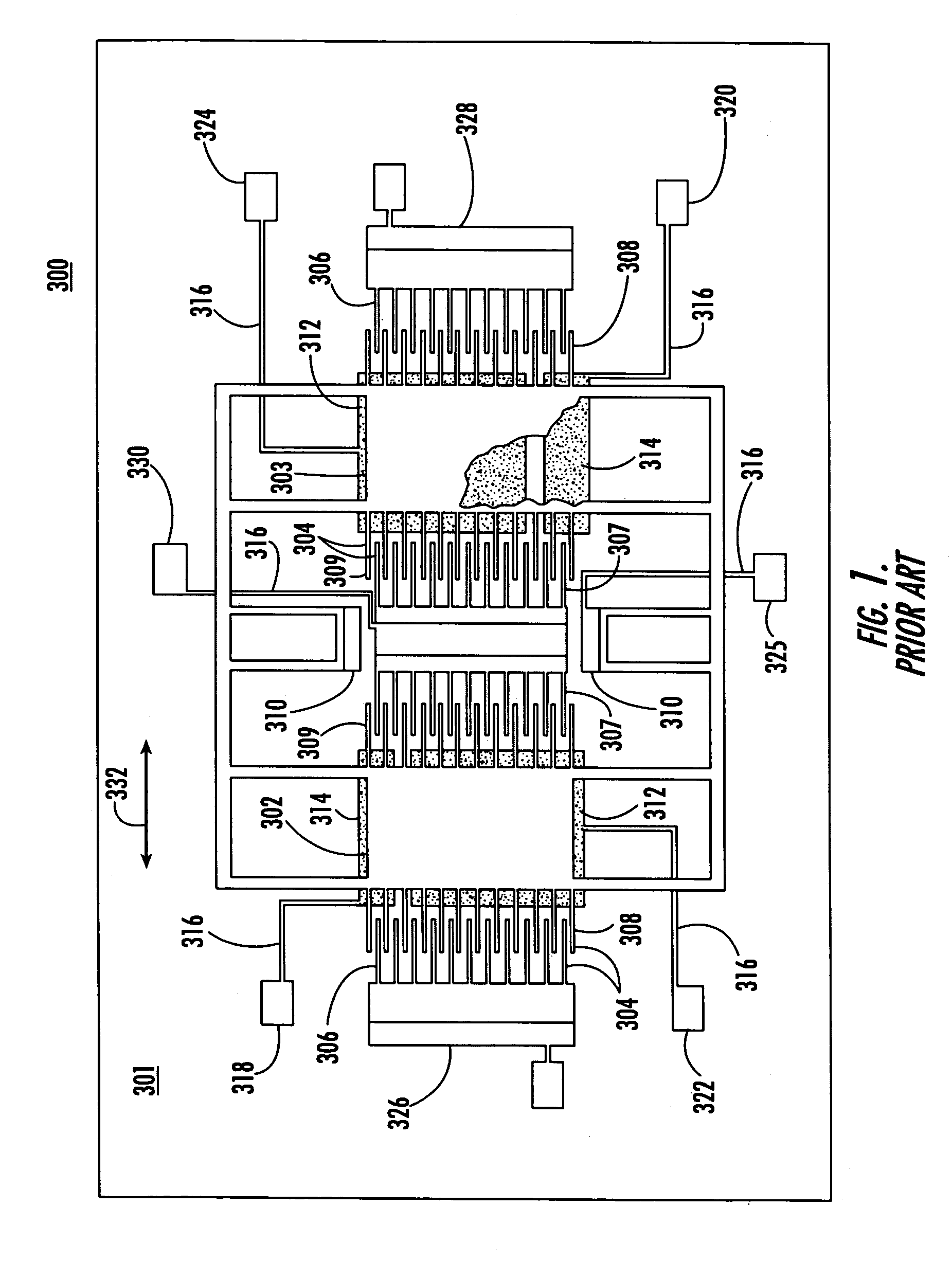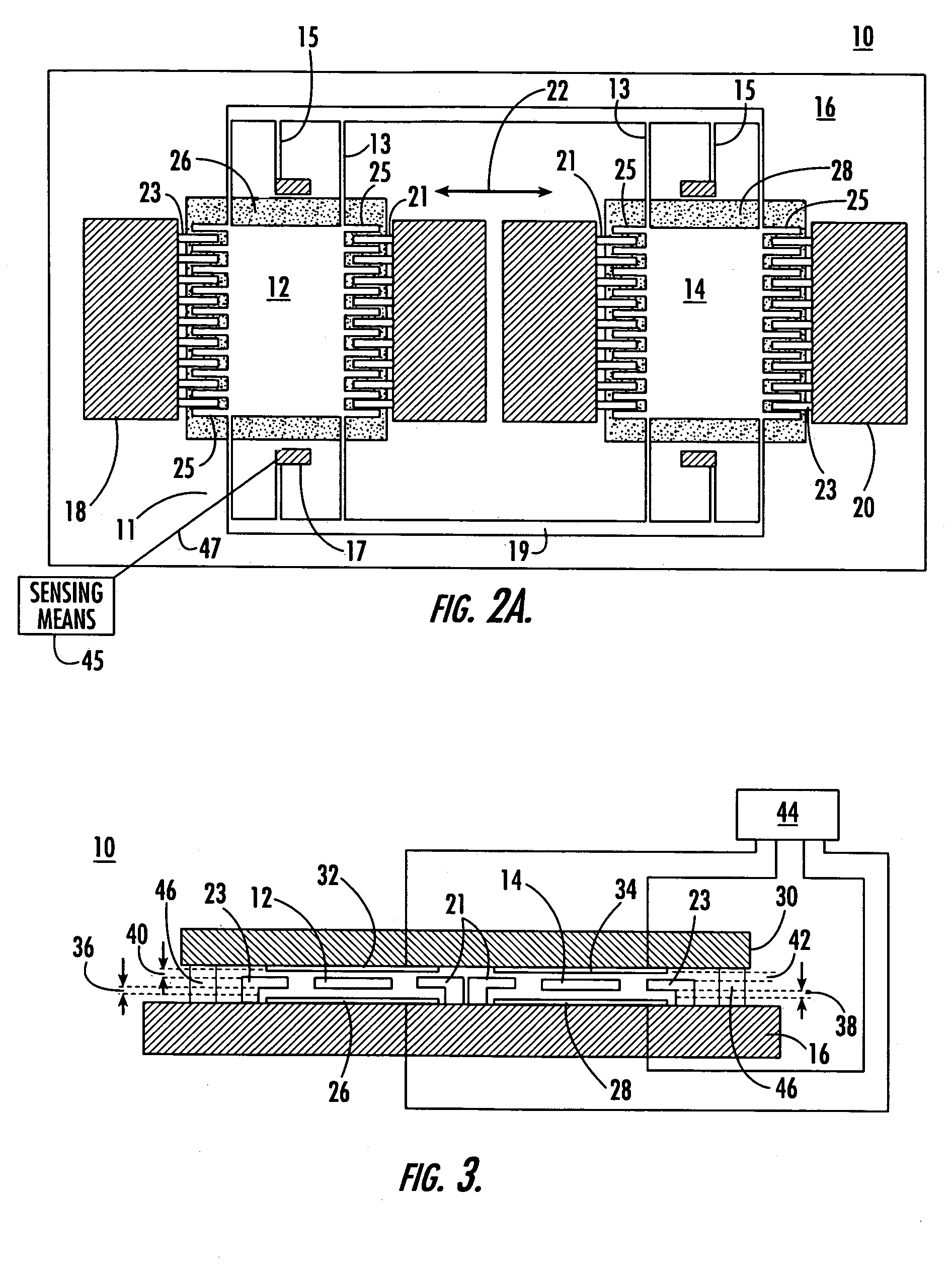Method for fabricating a tuning fork gyroscope
a technology of tuning fork gyroscope and manufacturing method, which is applied in the direction of acceleration measurement using interia force, instruments, coatings, etc., can solve the problems of scale factor error, tuning fork gyroscope bias error, type of bias error, etc., to reduce scale factor sensitivity, increase scale factor, and improve sensitivity
- Summary
- Abstract
- Description
- Claims
- Application Information
AI Technical Summary
Benefits of technology
Problems solved by technology
Method used
Image
Examples
Embodiment Construction
[0047]Prior art tuning fork gyroscope 300, FIG. 1, is also known in the art as a comb drive gyroscope. Gyroscope 300 includes vibrating or proof masses 302 and 303. Interleaved fingers 304, including outer comb drive fingers 306, 307 and inner comb driven fingers 308, 309 impart vibrational motion to vibrating masses 302, 303. The sensed motion is wired to electronics (not shown) that generate the driving voltage so that a self-oscillator is realized. It is known to reverse the role of inner and outer combs. Both solid and horizontally and vertically split inner combs have been used although horizontal splits in both the inner and outer combs are now preferred. Vibrating masses 302, 303 are suspended relative to lower substrate 301 by one or more anchors 310. Sense plates or electrodes 312, 313 and torque electrodes 314 are disposed only beneath a portion of each vibrating mass 302, 303. A plurality of conductive leads 316 interconnect right torque transducer 318, left torque transd...
PUM
 Login to View More
Login to View More Abstract
Description
Claims
Application Information
 Login to View More
Login to View More - R&D
- Intellectual Property
- Life Sciences
- Materials
- Tech Scout
- Unparalleled Data Quality
- Higher Quality Content
- 60% Fewer Hallucinations
Browse by: Latest US Patents, China's latest patents, Technical Efficacy Thesaurus, Application Domain, Technology Topic, Popular Technical Reports.
© 2025 PatSnap. All rights reserved.Legal|Privacy policy|Modern Slavery Act Transparency Statement|Sitemap|About US| Contact US: help@patsnap.com



